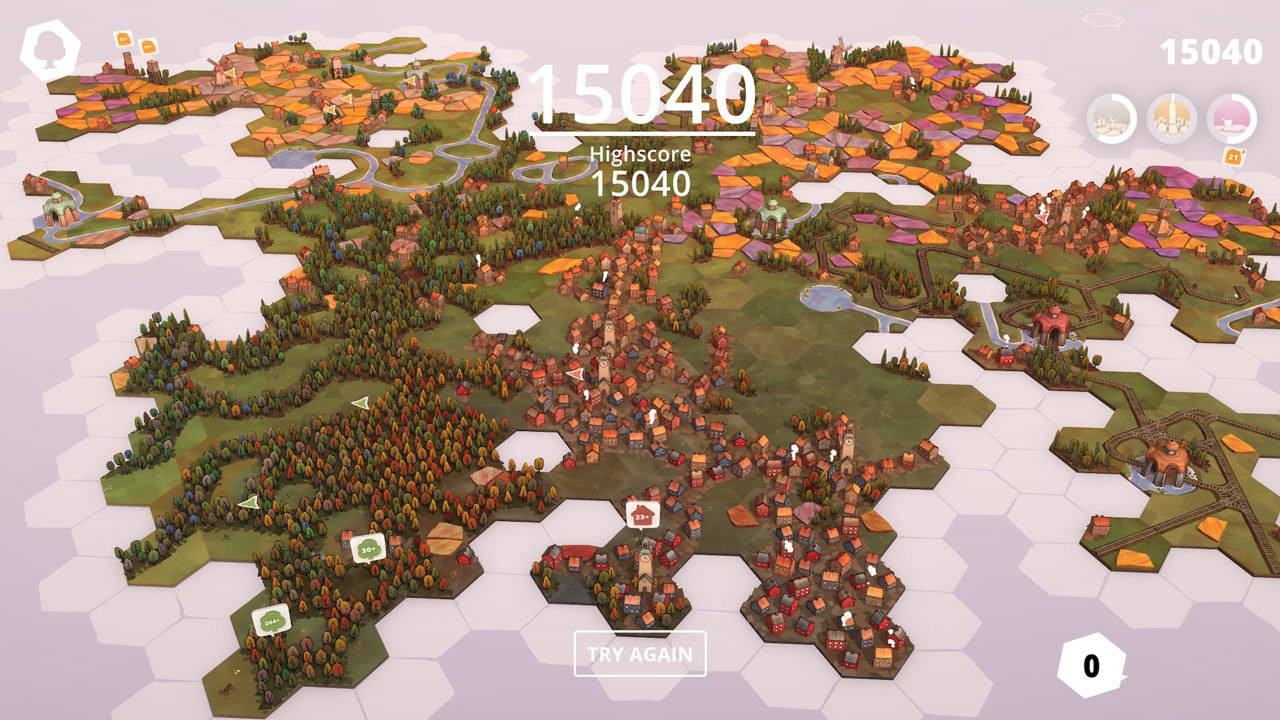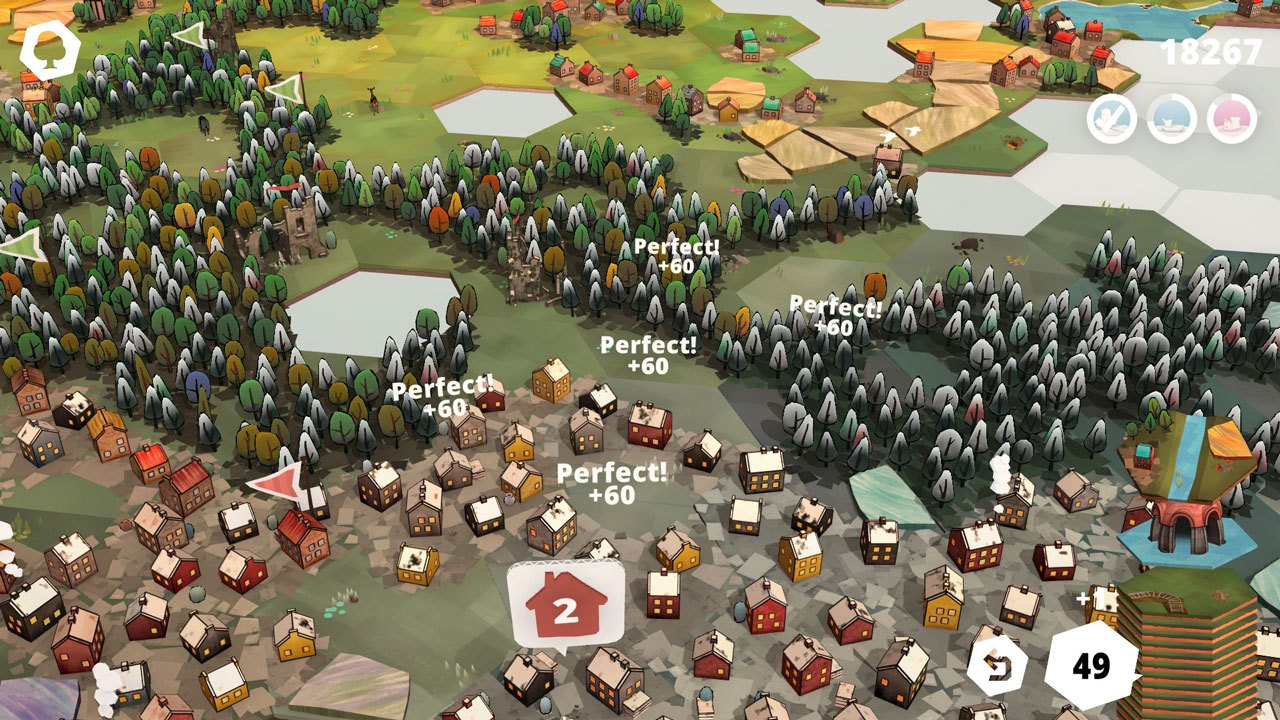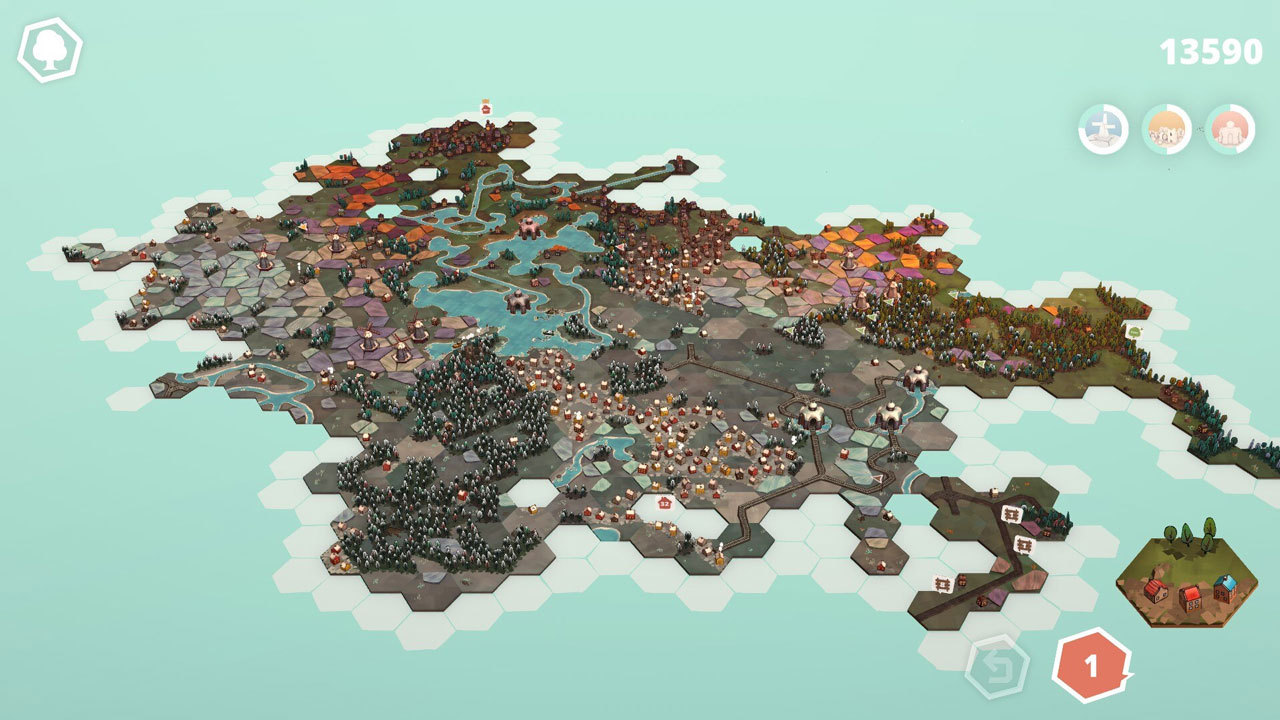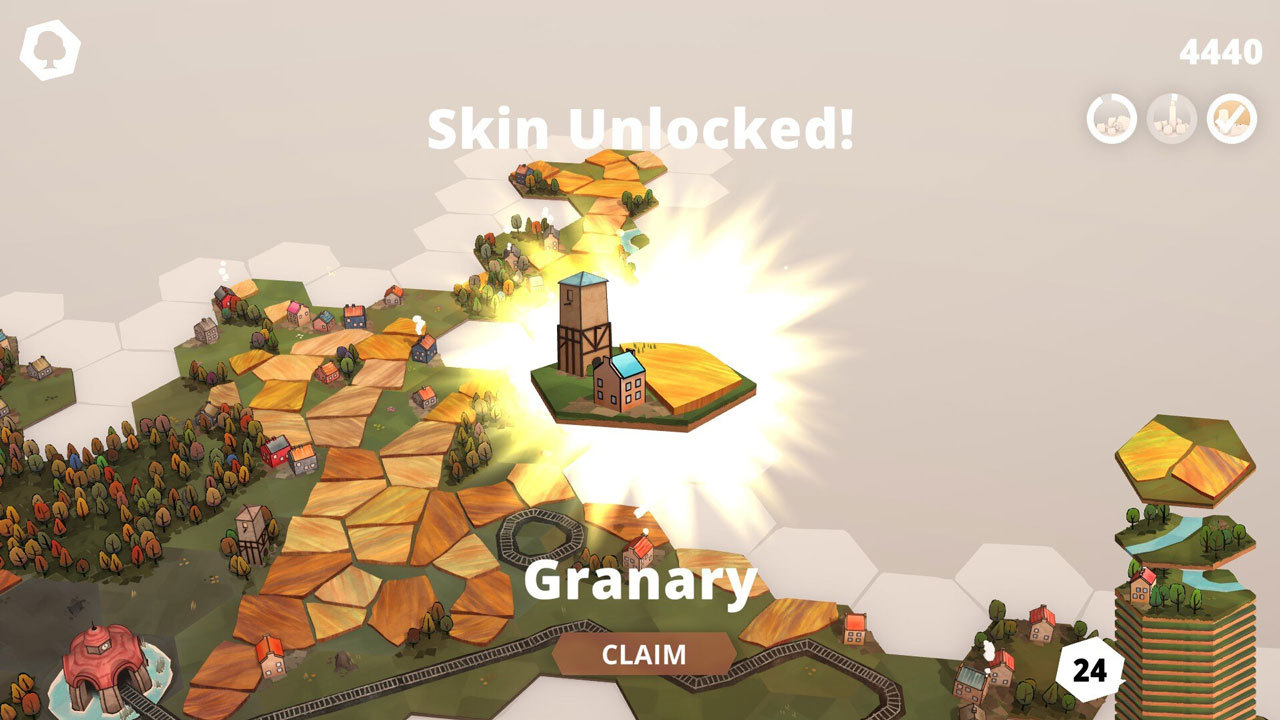Dorfromantik PC Review
Dorfromantik is a brilliant idea that adapts the genre of city builders to the puzzle genre without sacrificing the strategy elements that make for compelling gameplay.
Reviewed by Rayan on Sep 24, 2022
This is perhaps the most apparent statement to be made, yet games are incredibly objective-oriented. Ideas without a clear endpoint have been tried out several times in video games. We tend to assume that strategy games must have complex systems that need many hours of play to fully grasp, but there are other works that aim to inspire quieter emotions. A game comes very once in a while along that accomplishes something utterly new, and Dorf Romantik is one of those games. The developers of Dorfromantik show us how to unwind from our hectic lives by adopting a more casual approach to both music and visuals. Toukana Interactive have finished up the Early Access phase, and on April 28, 2022, Dorfromantik is playable on PC and releasing on Nintendo Switch on September 29, 2022.

The concept of the game is not complicated at all. The player begins Dorfromantik with only one tile, which must be put on a board. A line of tiles runs down the right side of the screen. The following two tiles, as well as the one we are going to put in, are visible to us. In most cases, a game's objective is to accumulate points by strategically positioning the tiles in order to do so in the most advantageous manner. Each tile is essentially a piece of a landscape, and on its six sides, it may display a variety of things, such as trees, farmed fields, desert land, water, dwellings, and other architectural features. The freshly put tile is worth extra points if it contacts other squares with equal-sided squares. In addition, some tiles can initiate missions, such as building a forest with a particular number of trees. This and other tasks can be completed by placing the appropriate number of trees or squares.
My favorite feature of Dorfromantik is not the gameplay, which offers some incredibly unique experiences, but rather the mechanisms that the game does not have. It is unnecessary to be concerned with the management of the resources because there is no population that has to be pleased. I did not find myself paying any attention to the score at any time throughout the game, even though it may provide satisfaction to those obsessed with moving up the leaderboards. It was a really peaceful experience to construct a constantly growing universe without having to worry about how it was being managed. This was a very refreshing experience. It reminded me of Townscaper, although that game is more concerned with the positioning of buildings and does not have an ever-expanding environment.

As you add more tiles to the landscape, you must strive to link the tiles with similar sides together. Extra points are awarded for this, and there are a few different building mechanisms to keep things interesting. Mission tiles, for instance, have you formed a massive grouping of the same item, like a forest or a neighborhood, by connecting numerous individual tiles. You may also be tasked with closing a cluster of objects by surrounding them with tiles so that the space is completely enclosed. To finish a quest, you need a certain number of things, but keeping a sequence open in case a quest tile appears adds a rewarding layer of strategy.
For this reason, even if a given quest tile needs the number of linked homes to be 30, a new group must be initiated if you already have more than that in your existing chain. Completing these objectives is a lot of fun and a great way to show off your foresight, and it's also essential if you want to keep your session continuing and rack up a high score. Players are given a small number of tiles with which to work at the beginning; as they complete tasks, their tile pool expands. When your tile supply is out, the game is ended, and you must begin again.
The gameplay of Dorfromantik keeps on getting lively for the missions that arrive one after the other. You will have to start worrying about the constraints on the placement of railways and rivers at some point in the not-too-distant future. In addition, you will lack the necessary tiles to finish the tasks. The need for a user interface with rules becomes apparent at this point. Before you start laying down the tiles, make an educated guess as to what will happen so you can avoid making any blunders. You may quickly reflect on what you ought to have done thanks to the undo feature, which enables you to reverse one action and then show the following card two cards ahead in the deck. This feature is also quite beneficial. The construction of a pleasant party that highlights the quest's flawless success is both beautiful and brief.

There are times when placing items together in order to earn points or expand your inventory becomes impossible. Yet the finished canvas in front of you, with which you forge a connection, is the source of the most incredible sense of satisfaction. I had a lot of fun with every town that I constructed, as well as each and every railway that I was able to correctly extend, each and every river that wound its way gracefully through the fields of corn, and each and every woodland in which the people could go to gather mushrooms and enjoy the outdoors. There is a creative mode for those who do not wish to be restricted by a certain number of tiles. This mode, which I found to be the most entertaining experience overall, is available for those players.
There are various game modes available that provide you with more creative flexibility without requiring you to think about things like points, which may be helpful if the concept of accumulating points causes you to feel stressed or confused. If you believe that the game's normal level is too simple for your tastes, there is a more challenging option that will put your Dorfromantik talents to the ultimate test. The various game modes, such as Classic, Hard, and Quick, each provide a unique experience for racking up points in the overall competition. Players who are proficient in the early game of Dorfromantik may find the Quick mode simpler, but players who are proficient throughout the game may wish to test their abilities by playing the game on the Hard level. In addition, there will be monthly challenges in the future, which, if they become active, should provide for some fun times in the game.

Although Dorfromantik's visuals aren't very detailed, that's the beauty of it. The visuals are not deficient in any way as a result of this. Machines, boats, mills, and other moveable features give the map actual life, and the parts all fit together flawlessly. The game's color scheme changes every so often, giving each playthrough a unique feel only strengthened by a laid-back score. The game soundtrack, which is set in a rural setting, is a perfect complement to the art. The background music is soothing and peaceful, solid but obscure. It's intriguing to use ambient noises generated by the tile patterns as a decoration rather than focusing on the melody's topic. There are birds singing and trains rumbling across the distance if you listen closely enough. All the sounds are soothing, transporting the gamer to a tranquil oasis far from the metropolis.
Even though it's not comparable with any 4X strategy or resource management in any way, shape, or form, however, you classify it, the game mechanics of Dorfromantik are not very difficult to understand. The development team has confirmed that they do not intend to incorporate a style of play of this kind in the final product. Multiplayer mode is likely the only feature that will be missing. It would have been quite exciting to design landscapes with a friend or other players in a co-op mode or to compete against each other to see who could achieve a specific score using the same set of tiles. However, these are merely our imaginations running wild, demonstrating that we would want to play Dorfromantik in various ways since the core concept is rather simple but a lot of fun.

The calming reputation of Dorfromantik is well-deserved. It's the ideal pastime for those long train rides or lazy afternoons at home. It's quite simple to pick up and play, yet it can keep you occupied for what seems like an infinite amount of time. It's an excellent choice if you're looking for a relaxing video game. Sometimes the complexity spikes too abruptly, and the puzzle parts become too complex. It's fine if that's what you're after, but the sweet spot is when your brain is practically asleep, but the stakes are still high enough to keep you interested. Dorfromantik is a brilliant idea that adapts the genre of city builders to the puzzle genre without sacrificing the strategy elements that make for compelling gameplay, providing a soothing environment in which to construct picturesque villages that exist in harmony with their natural surroundings.
Azfar Rayan (@AzfarRayan)
Editor, NoobFeed
Senior Editor, NoobFeed
Verdict
90
Related News
No Data.

